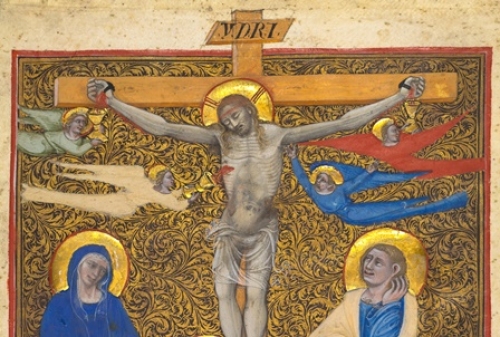Bologna is the capital and largest city of Emilia-Romagna and one of Italy’s important historical cities. The region is perhaps less well-known among American visitors than Tuscany or the Veneto. Bologna, however, is worth a visit. The city is famed for having the oldest university in the Western world, a lively student population, exquisite food, typical brick terracotta-roofed architecture and porticos, theater, and nightlife. Bologna is particularly famous for its cuisine (la cucina Bolognese). It is also viewed by Italians as a progressive and well administered city. It is considered second only to Venice in beauty by many Italians and certainly has one of the largest and best preserved historic centers among Italian cities. Its architecture is noted for its palette of terracotta reds, burnt oranges and warm yellows, hence the name of Bologna la rossa (Bologna the red). The extensive town center, characterized by miles of attractive covered walkways, known as "porticos," is one of the best-preserved in Europe.
During the Middle Ages, Bologna was an academic city as it remains today. It is the seat of the oldest university in continental Europe, founded in 1088. Medieval students flocked to Bologna to study canon law, the university’s academic specialty, and for which it was famous throughout Europe. Students, professors, clergy, and others required books in large numbers, so, too, Bologna became an important center of the book arts.
The leading illuminator of manuscripts in Bologna during the second half of the Trecento, Niccolò di Giacomo da Bologna (active 1349-1403), was enormously successful at a time when the demand for books was high. Printed books were still a century away, and books at this time were hand made using parchment (animal skin) with specialized artists and craftsmen contributing to the final work. These included a copyist to enter the text into the volume using quill pens and ink. An artist known as an illuminator would decorate the book with pictures called miniatures and other decorations. Finally, a professional binder would collate the loose leaves and bind them between leather-covered wooden boards. Italy had a great tradition of manuscript illumination in the 1400s, and one of its important production centers was the city of Bologna.
Niccolò da Bologna’s prodigious output included legal, academic and liturgical books. He was unusual in that he signed some of his works, as is seen in a miniature of the “Crucifixion” dating to about 1390 now in the Cleveland Museum of Art. In the lower right corner may be seen the Latin words, NICOLAUS.F[ecit] or “Nicholas made me.” Highly regarded by his contemporaries, Niccolò owned two houses in Bologna and nine pieces of land. By the late 1380s, he had been appointed illuminator to the city of Bologna and was mayor of the district of Zappolino and special counselor to the Bolognese book trade. In 1393 he was elected to the Consiglio dei Quattrocento (Council of the Four Hundred), a civic body in Bologna.
Niccolò undoubtedly painted the miniature now in Cleveland in his official capacity as Bologna’s city illuminator. It features the elements of a traditional Calvary group: a crucified Christ flanked by the Virgin and St. John, Mary Magdalene at the foot of the cross, and lamenting angels above collecting the blood from Christ’s wounds in chalices. The figures appear against a background of feathered acanthus leaves in gold over black, which creates a striking visual effect. Along the bottom edge are the remnants of three shields, lost when the miniature was removed from its parent volume at some unknown moment in its history. Recent study has shown that the shields depicted the arms of the city of Bologna at center, with those of the apothecaries’ guild on either side. Thus, we can say that the miniature was intended to be the frontispiece (opening page) to a guild register or perhaps a statue book for the city’s apothecaries’ guild. Religious images like this, combined with heraldic shields, were typical of the decoration of Bolognese guild registers in the 1300s.
As a painter, Niccolò adopted the style of the renowned Florentine painter, Giotto. This included robust figures with almond-shaped eyes and slightly green-tinged flesh tones, and figures draped in vivid colors – pale pink, light blue and gray, dark red, and deep blue with white highlights. Niccolò’s figures are often highly animated and his crowded compositions have considerable energy and powers of expression. Eventually, his style was adopted by younger Bolognese illuminators who carried it throughout Italy and even to Paris. The Cleveland “Crucifixion” miniature by Niccolò provides a beautiful example of Bolognese illumination of the late 1300s and a wonderful link to one of Italy’s most intellectual and historic cities.
CAPTION:
Miniature from a Manuscript: The Crucifixion
Tempera and gold on parchment, about 1390
Niccolò di Giacomo da Bologna
Italian, Bologna, active 1349-1403
The Cleveland Museum of Art. Gift of J.H. Wade 1924.1013



